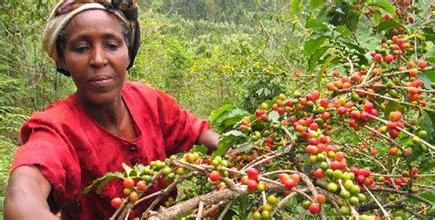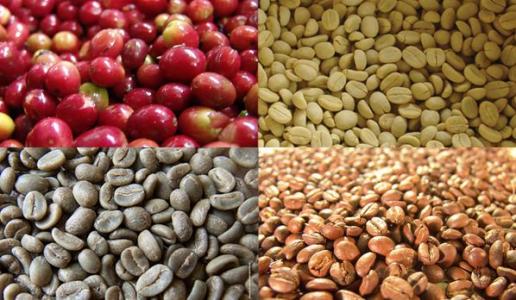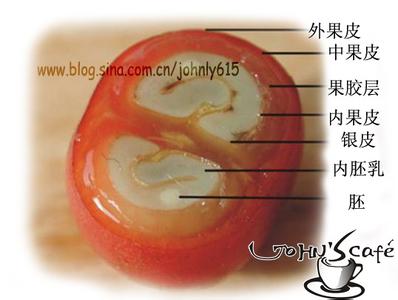Tarazhu Coffee Flavor description Taste Manor region introduction
Tarazhu Coffee Flavor description Taste Manor region introduction
Tarazhu coffee raw bean color is blue-green, with the characteristics of extremely hard beans, round beans, small particles, slightly poor uniformity, using full washing treatment, the variety is Kaddura of Costa Rica, in order to highlight its refreshing and clean taste, we use light to medium baking.
The cup test shows that the roasted coffee alcohol is moderate in thickness, smooth and smooth in the mouth, with a slightly sour taste, a rich sucrose flavor, a dry aroma similar to that of sweet-scented osmanthus, which will fade after brewing and softer after lowering the temperature. it is a kind of coffee suitable for summer drinking Tara beads from the most famous producing areas of Costa Rica and beans produced by LA pastora Farm. At present, the Tarazhu Cooperative has 26 member farms. The Tarazhu region can be said to be the most famous coffee producing area in Costa Rica. The Tarazu Farm in Costa Rica is produced here. In the boutique coffee world, many people know that it is located in the fertile volcanic region of Central America. It has a humid climate and fertile volcanic soil, abundant rainfall throughout the year, high altitude, and dense forest natural shade. It provides a unique growth environment for coffee growth.
There are many excellent producing areas in Costa Rica, and the high-quality producing areas of Costa Rica have a common understanding of quality, that is, it requires the use of mature coffee fruits to ensure the production of high-quality coffee.
Generally speaking, a large amount of water is used in the post-processing of the picked coffee fruit, but the advanced production equipment in Costa Rica saves the use of water resources to the greatest extent, and a circulating filter is used to treat the waste water from washing coffee beans. let the waste water be purified into clean water to prevent pollution of the local soil environment.
After peeling, the peel and pulp of the coffee fruit are recovered as feed for livestock, or converted into organic fertilizer, as well as coffee bean dryer fuel. It can be said that in every process of coffee production, Costa Rica complies with the requirements of maintaining the natural environment.

Important Notice :
前街咖啡 FrontStreet Coffee has moved to new addredd:
FrontStreet Coffee Address: 315,Donghua East Road,GuangZhou
Tel:020 38364473
- Prev

Coffee filter pot ratio of coffee powder to water-ratio of hand-brewed coffee powder to water
Coffee filter pot the ratio of coffee powder to water-the ratio of hand-brewed coffee powder to water one, the ratio of powder used by the bean uncle coffee roaster is 1:16, if you like the SCAA standard, you can change it to 1:18, this change will reduce the concentration of the coffee. That is, if 500ml water is injected into the kettle, the amount of coffee beans used is 32 grams or 28 grams.
- Next

Description of Flavor of Coffee between altitude and acidity introduction of Grinding scale Variety producing area
Coffee altitude and acidity relationship Flavor description Grinding scale Variety production area although altitude is only one of the many factors to measure coffee quality, it is definitely the most important one. The next time you go to the coffee shop, please ask the barista to tell you the origin of the coffee in the cup, which will not only enrich your coffee knowledge, but also improve your overall coffee experience! Altitude will be directly shaded.
Related
- What brand of black coffee is the most authentic and delicious? what are the characteristics of the flavor of the authentic Rose Summer Black Coffee?
- Introduction to the principle and characteristics of the correct use of mocha pot A detailed course of mocha pot brewing coffee is described in five steps.
- Which is better, decaf or regular coffee? how is decaf made?
- How much is a bag of four cat coffee?
- How about four Cat Coffee or Nestle Coffee? why is it a cheap scam?
- Which is better, Yunnan four Cats Coffee or Nestle Coffee? How about cat coffee? is it a fake scam? why is it so cheap?
- How about Cat Coffee? what grade is a hoax? which instant coffee tastes better, four Cat Coffee, Nestle Coffee or G7 coffee?
- Process flow chart of coffee making-Starbucks coffee making process what coffee tastes good at Starbucks
- The top ten best coffee beans in the world Rose summer coffee or Tanzanian coffee tastes good
- Yunnan four cat coffee is good to drink?_four cat coffee is a big brand? four cat blue mountain coffee is fake?

